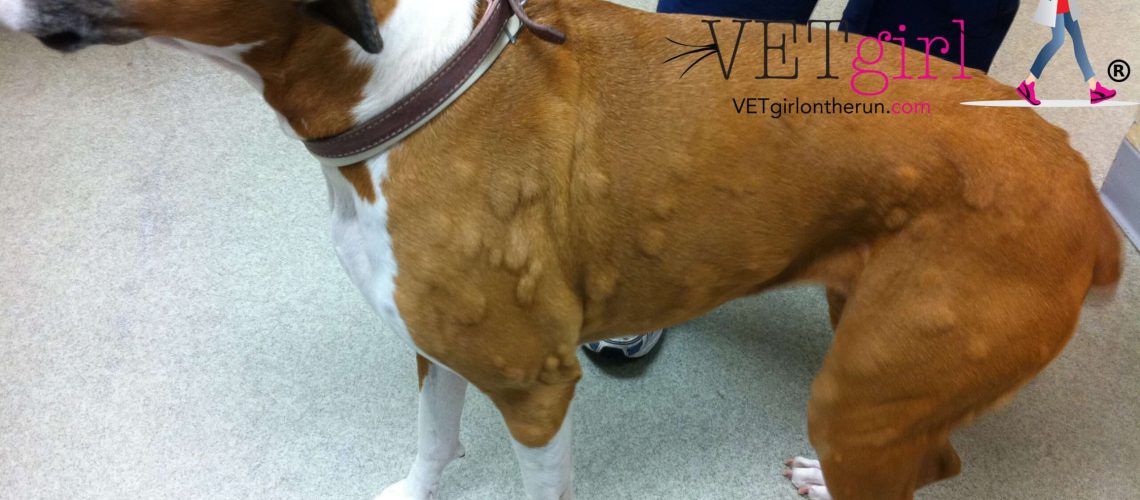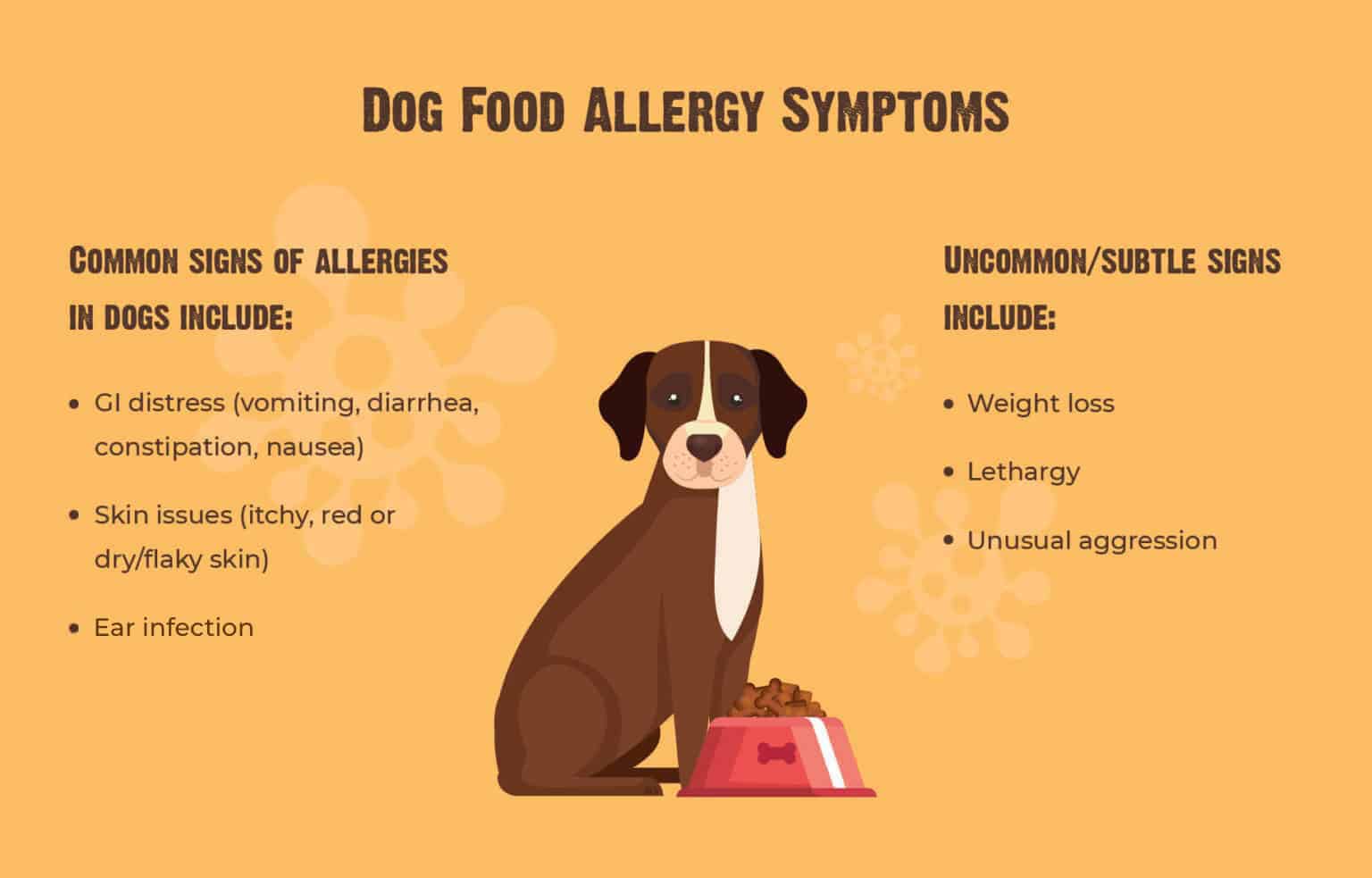Key Takeaways:
- Identify the allergen: It is crucial to determine the specific allergen that is causing the reaction in your dog. This can be done through allergy testing or by observing patterns of reactions.
- Avoid exposure to allergens: Once the allergen is identified, it is important to minimize or eliminate your dog's exposure to it. This may involve making changes to their diet, environment, or grooming products.
- Administer medication if necessary: In some cases, allergic reactions in dogs may require medication to alleviate symptoms. Antihistamines and corticosteroids are commonly used to reduce itching and inflammation.
- Consult with a veterinarian: If your dog experiences severe or recurring allergic reactions, it is essential to seek professional advice from a veterinarian. They can provide a proper diagnosis and recommend appropriate treatment options.
- Monitor for potential complications: Allergic reactions can lead to secondary infections or other complications. Keep an eye out for any signs of infection, such as redness, swelling, discharge, or persistent discomfort, and consult with a vet if necessary.
Are you a dog owner who wants to ensure your furry friend stays healthy and happy? If so, understanding how to treat allergic reactions in dogs is essential knowledge that can greatly benefit both you and your beloved pet. Allergies are not only uncomfortable for dogs, but they can also lead to serious health complications if left untreated. By delving into this subject, you will gain valuable insights on how to identify allergic reactions in dogs and learn effective treatments that can alleviate their discomfort. With clear explanations and simple language suitable for a 7th grader, this guide will equip you with the necessary tools to provide the best care for your four-legged companion. So let's dive in and discover the world of canine allergies together!
Common Signs of Allergic Reactions in Dogs
Allergies can affect dogs just like they affect humans. If your dog is experiencing an allergic reaction, there are common signs you can look out for. One sign is excessive itching or scratching. Your dog may constantly scratch their skin, chew on their paws, or rub against furniture to relieve the itchiness. Another sign is redness or inflammation of the skin. You may notice areas of redness or swelling on your dog's body, especially around their ears, face, belly, or paws.
Other signs of allergies in dogs include sneezing, coughing, and watery eyes. Just like humans, dogs can also have respiratory allergies that cause these symptoms. Additionally, some dogs may experience gastrointestinal issues such as vomiting or diarrhea due to food allergies. It's important to pay attention to any changes in your dog's behavior or appearance and consult with a veterinarian if you suspect an allergic reaction.
Signs of Allergic Reactions in Dogs:
- Excessive itching or scratching
- Redness or inflammation of the skin
- Sneezing, coughing, and watery eyes
- Gastrointestinal issues like vomiting or diarrhea
Why it matters:
Recognizing the signs of allergic reactions in dogs is crucial because it allows you to take appropriate action and provide relief for your furry friend. Allergies can make your dog uncomfortable and affect their overall well-being. By identifying the symptoms early on, you can work with a veterinarian to determine the cause of the allergy and develop a treatment plan.
Tips for Prevention:
To prevent allergic reactions in dogs, there are a few steps you can take. First, try to identify and eliminate any potential allergens in your dog's environment. This could include certain foods, pollen, dust mites, or fleas. Regularly cleaning your home and washing your dog's bedding can help reduce exposure to these allergens.
Additionally, maintaining good hygiene for your dog is essential. Regularly bathing them with hypoallergenic shampoos can help remove allergens from their skin and coat. It's also important to feed your dog a balanced diet that meets their nutritional needs. A healthy immune system can better defend against allergies.
Prevention Tips for Allergic Reactions in Dogs:
- Identify and eliminate potential allergens
- Clean your home and wash your dog's bedding regularly
- Maintain good hygiene by bathing your dog with hypoallergenic shampoos
- Feed your dog a balanced diet to support a healthy immune system
Preventing Allergic Reactions in Dogs: Tips and Tricks
Regular Grooming
Grooming your dog regularly is an essential step in preventing allergic reactions. Regular brushing helps remove allergens such as pollen, dust, and dander from their coat, reducing the chances of a reaction. Additionally, keeping your dog's fur clean and well-maintained can help prevent skin irritation that may lead to allergies.
Allergen-Free Environment
Creating an allergen-free environment for your dog can significantly reduce the risk of allergic reactions. This involves minimizing exposure to potential allergens such as certain foods, chemicals, or environmental triggers like mold or pollen. Keeping your home clean and dust-free, using hypoallergenic bedding materials, and avoiding scented products can all contribute to a healthier environment for your furry friend.
Tips:
- Regularly bathe your dog using a gentle shampoo specifically formulated for sensitive skin.
- Vacuum and dust your home frequently to minimize the presence of allergens.
- Avoid using harsh cleaning products that may irritate your dog's skin or respiratory system.
What to Do if Your Dog Shows Signs of an Allergic Reaction
If you notice signs of an allergic reaction in your dog, it's crucial to act promptly to ensure their well-being. The first step is to identify the cause of the reaction. Common signs include excessive itching, redness or swelling of the skin, sneezing, coughing, vomiting, or diarrhea. Once you've identified the trigger, remove it from your dog's environment immediately.
If the symptoms are mild and manageable at home, you can try soothing your dog's discomfort by applying a cold compress to the affected area or using over-the-counter antihistamines specifically formulated for dogs. However, it's essential to consult with your veterinarian before administering any medication to ensure the correct dosage and safety for your pet.
Over-the-Counter Medications for Treating Allergic Reactions in Dogs
When it comes to treating allergic reactions in dogs, there are some over-the-counter medications available that can provide relief. Antihistamines are commonly used to alleviate symptoms such as itching, sneezing, and hives. However, it's crucial to consult with your veterinarian before giving any medication to your dog, as they can determine the appropriate dosage and recommend the most suitable option based on your dog's specific needs.
Common Over-the-Counter Antihistamines for Dogs:
- Diphenhydramine (Benadryl)
- Cetirizine (Zyrtec)
- Loratadine (Claritin)
When Should You Seek Veterinary Care for a Dog's Allergic Reaction?
In some cases, allergic reactions in dogs can be severe or even life-threatening. It's crucial to recognize when veterinary care is necessary. If your dog experiences difficulty breathing, swelling of the face or throat, persistent vomiting or diarrhea, or any other severe symptoms, seek immediate veterinary attention.
Your veterinarian will be able to assess the situation and provide appropriate treatment options. They may administer medications such as corticosteroids or epinephrine to alleviate severe allergic reactions. Remember, quick action can make a significant difference in ensuring your dog's well-being during an allergic reaction.
Managing and Treating Dog Allergies: Can Changing their Diet Help?
Changing your dog's diet can sometimes help manage and treat allergies. Food allergies are relatively common in dogs, and certain ingredients may trigger allergic reactions. If you suspect a food allergy, your veterinarian may recommend an elimination diet to identify the specific allergen.
An elimination diet involves feeding your dog a limited ingredient diet consisting of novel protein sources and carbohydrates they haven't been exposed to before. This allows you to monitor their response and identify any potential triggers. Once the allergen is identified, your veterinarian can guide you in selecting an appropriate hypoallergenic diet or recommending dietary modifications to alleviate symptoms.
In conclusion, if your dog has an allergic reaction, it is important to seek veterinary help right away. They can provide medication and advice on how to prevent future reactions, ensuring your furry friend stays happy and healthy.
What can I take for an allergic reaction to my dog?
Dog allergies can be treated with nasal sprays like azelastine (brand name Astelin) and decongestants such as over-the-counter Sudafed and Allegra-D. These medications help reduce nasal swelling and congestion.
How long does it take for allergic reaction to go away in dogs?
Hives can occur on any part of your dog's body, but they are typically seen on the head, neck, back, stomach, and legs. If the case is mild, the hives typically go away within 12-48 hours after coming into contact with the allergen.
Can I give my dog Benadryl for an allergic reaction?
Benadryl is frequently utilized in dogs experiencing mild to moderate allergies. It can provide relief from symptoms such as itching, sneezing, and watery eyes. However, it is crucial to consult with your veterinarian before administering Benadryl to your dog, as it may have interactions with other medications or existing health conditions.
What is a natural alternative to Benadryl for dogs?
Quercetin is a natural substance known as a bioflavonoid that can offer relief for allergies in dogs. It helps to alleviate symptoms such as itching, scratching, licking, and chewing. Many veterinarians recommend quercetin as a safe and natural antihistamine for dogs. In fact, it is often called "Nature's Benadryl".
Why isn't Benadryl working for my dog?
Dog allergies are not the same as human allergies. In humans, upper respiratory allergies are caused by histamines, while in dogs, itchy skin is caused by cytokines, not histamines. For dogs with underlying allergies, antihistamines are not effective in controlling the inflammation and itch caused by cytokines.
Is Benadryl or Zyrtec better for dogs?
Claritin (loratadine) and Zyrtec (cetirizine) are alternative antihistamines that are safe for dogs. These medications may cause less sedation compared to Benadryl, but they can still make your dog feel drowsy. It is important to check that your over-the-counter allergy medicine only contains antihistamines.

















